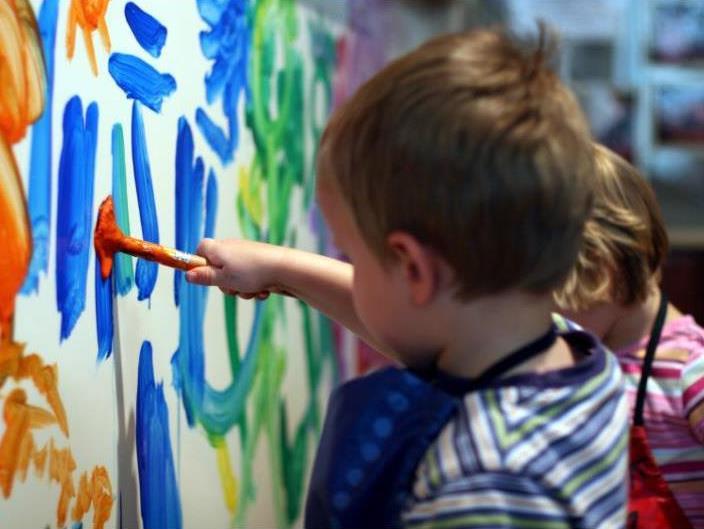Many adults believe they are not artistic and feel nervous about visual art. They vividly recall the moment when a teacher or family member discouraged their efforts to creatively express their ideas through drawing or art-making. Such early childhood experiences can affect developing confidence and learning potential throughout a child’s education and into adulthood.
If preschool educators lack the visual art knowledge and confidence to provide valuable art experiences, children’s potential to creatively express their ideas using visual symbols may be restricted.
Creative thinking and the ability to make meaning in many ways is the key to success in the 21st century. And in a world that values creative thinking it is concerning that children’s creative growth may be stifled even before they go to school.

The right to creativity
The Convention on the Rights of the Child (Article 31) states that children of all ages have the right to access and fully participate in cultural and artistic life.
We know that the early childhood years lay the foundation for all future creative learning and development. That’s why it should worry us that some children may not have access to high-quality visual art education.
American educational scholar Elliot Eisner refers to this as the null curriculum – the learning that children miss out on when educators lack the subject knowledge, skills and self-confidence to deliver enriching visual art experiences.
The personal and professional beliefs of educators directly impact what and how they teach children. If an educator’s fear of art stifles a child’s individual learning style at a young age, this may prevent them from reaching their full potential later on.
How much play goes on in pre-school?
But aren’t the walls of early childhood centres plastered with children’s paintings and drawings? No doubt most people assume that preschools, more than any other education setting, provide creative environments and experiences that best support children’s artistic learning and potential. But this is not always the case.
Many early childhood educators lack the self-belief, skills and knowledge needed to provide quality visual arts experiences. They struggle to provide the types of experiences that support young children to access the many benefits of making visual art.
Visual art experiences enhance young children’s learning and development in many ways. These include intrinsic motivation, enjoyment, positive attitudes, cognitive problem solving, self-discipline, the development of tools for communication and meaning-making and fostering creativity and imagination, to name just a few.
In fact learner-centred environments like those you expect to find in early childhood services can increase children’s creativity scores.

Creative teachers
The problem is that these benefits only exist when effective, quality provisions are made by teachers.
The research that I am doing at the University of Wollongong is tackling this problem. I am finding that many early childhood educators doubt their own visual art knowledge and ability to deliver visual art experiences to children.
While educators value art as a central part of the early childhood curriculum, their beliefs about the purposes of art are confused. Some see art activities as a way to keep children busy. Others use art as a form of therapy or fine-motor development instead of as a tool for communication, problem-solving, and meaning making.
At the same time, the experiences offered to children in the name of art often consist of adult-directed crafts and activity sheets – instead of creative and open-ended use of quality art materials. A lack of content knowledge, art skills and confidence causes educators to justify the use of gimmicky commercial materials like glitter, pipe-cleaners and fluorescent feathers. They believe these materials are more fun for children.
Some educators believe they should actively teach children by modelling and demonstrating visual art skills. But others maintain an outdated hands-off approach and refuse to demonstrate art skills for fear of corrupting children’s natural artistic development. What is most concerning is that few early childhood educators recall the arts-based components of their pre-service training.
The place of the arts in the Australian school curriculum continues to be threatened and hotly debated. At the same time, references to the visual arts in the Australian Early Years Learning Framework are unclear and provide little guidance for educators. In this context governments, universities, and skills-based courses need to re-consider the training of all educators, give them confidence to overcome the insecurities they express about their ability to teach art and to embed the arts in their teaching.
British educator Ken Robinson blames formal schooling for killing off children’s creative potential. Actually, this process starts much earlier – when early childhood educators are not well trained in the artistic knowledge and mindset to nurture children’s imagination, meaning-making, and creative expression using visual art materials and methods.
If educators and communities do not nurture children’s artistic creativity in the vital early childhood years, their lifelong potential for engaged creative learning is stifled.
This article was originally published on The Conversation. Read the original article.





